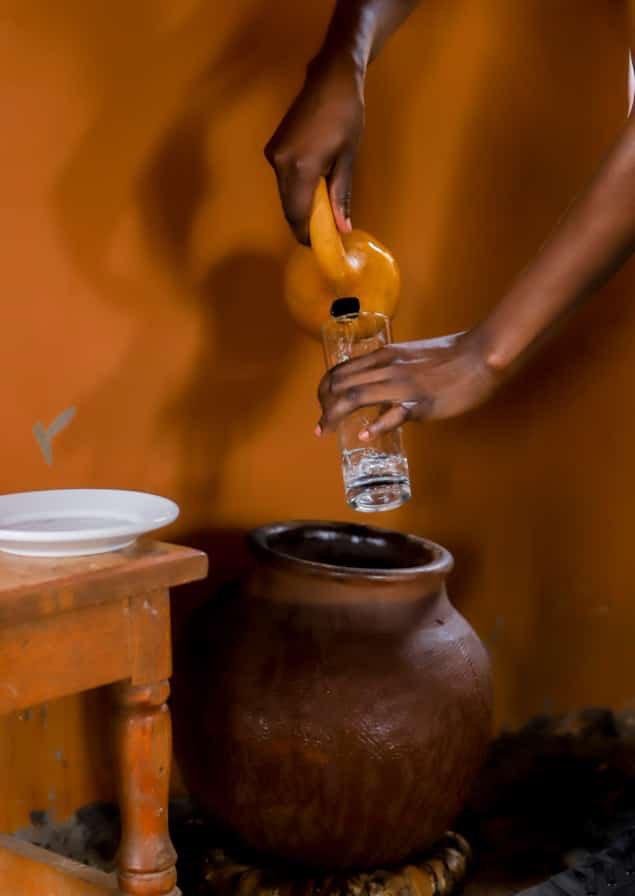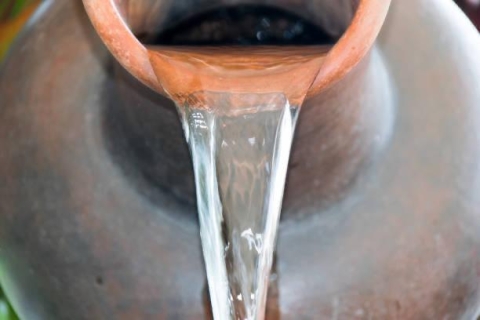The Fragrance of Tradition in Uganda’s Naturally Fridged Water Pot
The Fragrance of Tradition in Uganda’s Naturally Fridged Water Pot
In a world where refrigerators and bottled water dominate modern living, there still exits a simple, elegant and deeply traditional way of keeping water cool and refreshing. In Uganda’s Kumi District, located in the eastern part of the country, the people have long perfected a remarkable method of storing and cooling drinking water using a locally made clay pot (ensuuwa). This is not just a container, it’s a living part of cultural heritage, a symbol of natural ingenuity, and a vessel of sensory delight.
A Tradition Shaped by Nature and Culture
The people of Kumi, like many communities across Uganda, have relied on clay pots for generations. In the absence of electricity and modern cooling systems, they discovered that clay has a natural ability to regulate temperature. The porous surface of the pot allows for slow evaporation, which cools the water inside to a soothing, drinkable temperature. However, in Kumi, the process involves a special twist, one that transforms ordinary water into a fragrant and refreshing cultural experience.
Before a pot is used for storing drinking water, it undergoes a unique preparation process. Dried banana peeling – matooke (a locally delicious food in Uganda) not the leave are collected and carefully burned inside the pot for about two hours. This step is not merely for sterilization or cleaning, it’s a form of natural flavoring. The banana peelings release a sweet, smoky aroma that settles into the porous clay, infusing it with a distinctive scent. Once the burning process is complete, the pot is washed thoroughly, left to dry under shade, then set aside for use.
The Art of Setting the Pot
Placement is an important part of the process. The pot is never placed on a cemented or tiled floor. Instead, it is positioned in a cool, shaded corner of the house, often on a smooth, earthen floor. The natural; soil beneath the pot enhances the cooling effect. The interaction between the clay and the earth draws away warmth and maintains a constant cool temperature – an ingenious example of local adaptation to the environment.
In many traditional homes, the pot sits on s small stand or ring woven from dry grass or banana fibers to keep it steady and clean. The neat piece of cloth or woven lid covers the mouth of the pot, protecting the water from dust and insects while still allowing air to circulate. Guests and family members alike are free to draw water at any time, usually using a small calabash or cup reserved specifically for the pot.
The Aroma and the Experience
What makes this Kumi water pot truly unforgettable is the sensory experience it provides. The first sip is both familiar and exotic – the water is cool, smooth and carries a faint, pleasant scent reminiscent of the countryside. The aroma from the burnt banana peels lingers delicately, blending with the natural earthiness of the clay to produce a refreshing taste that modern purification systems can never replicate.
Many locals describe this water as “soothing.” Not just to the body but to the soul. After a long day in the sun or while returning from the garden, taking a cup of this naturally chilled water offers a comforting moment of rest and connection. It’s a taste that evokes home, memory, and a deep respect for the simple harmony between people and their environment.
Health, Sustainability, and Heritage
Beyond its sensory appeal, the Kumi water pot represents sustainability in its purest form. The materials – clay, banana leave, and soil – are entirely natural and locally available. The process requires no electricity, no plastics, and no industrial additives. In an age where sustainability is increasingly valued, this traditional practice stands as an inspiring model of eco-friendly living.
Storing water in a clay pot carries health benefits. The natural cooling process keeps the water at a balanced temnperature, safe for consumption even in hot climates. The mineral in the clay can help neutralize acidity, while the burning of banana peelings serves a dual purpose – sterilizing the pot and leaving behind compounds that deter bacterial growth. This simple act of tradition is, in fact, a natural form of purification that predates modern science.
A Symbol of Hospitality
In Kumi and many parts of Uganda, offering a guest water from a clay pot is a gesture of hospitality. It’s not just about quenching thirst – it’s a cultural welcome, an unspoken message of friendship and respect. Guests are often served using a clean calabash, and the freshness of the water becomes part of the experience of being received warmly into a home.
Travelers to eastern Uganda often recall their first encounter with this local water as a memoreable cultural moment. For them, the taste us unlike anything bottled or filtered – its water that tells a story, connecting them to the land and the people who have cherished this tradition for centuries.
Preserving the Craft
Like many traditional practices, the art of making and maintaining these local water pots is slowly fading. The rise of urbanization, modern materials, and changing lifestyles has reduced. The use of clay pots in many homes. Yet, in Kumi, some families and potters continue to uphold the practice, ensuring that younger generation can still appreciate its value.
Local artisan pass down their skills through generations. The process of molding, shaping, and firing the clay requires patience and precision. Each pot is slightly different – its texture and tone depending on the type of clay and firing technique used. Some pots are adorned with simple patterns or lines, reflecting the maker’s signature or community identity.
Reviving interest in such crafts not only preserves cultural heritage but also provides income for local artisans, especially women who have traditionally led pottery production in rural Uganda. Promoting the Kumi pot as a symbol of cultural tourism can help sustain both livelihoods and traditions.
Community Initiatives for Sustainability
Supporting such grassroots traditions also aligns with broader efforts by local organizations such as the Peace Advocates Network (PAN) — a community-based organization working across eastern Uganda. PAN promotes peacebuilding, sustainability, and environmental conservation, empowering communities to embrace practices that protect both culture and nature. Through its community engagement programs, the organization encourages the preservation of indigenous knowledge systems like the Kumi pot tradition, while promoting responsible use of natural resources and eco-friendly living.
By highlighting simple, sustainable practices, PAN reminds communities that development does not mean abandoning tradition. Rather, it means drawing wisdom from the past to build a more balanced and resilient future; one that values harmony between people, culture, and the environment.
A Must-Try Experience in Uganda
For visitors to Uganda, tasting water from a traditional clay pot in Kumi is a must-do experience, one that transcends the ordinary. It’s a reminder that true refreshment doesn’t come from refrigeration or branding, but from authenticity and simplicity. This is water as nature intended it; cool, aromatic, and full of character.
So, when you find yourself in Uganda, make sure to ask for a sip of this locally “fridged” water. Close your eyes, take in the scent of the banana peelings, feel the coolness of the clay, and savor the refreshing taste. You’ll not only quench your thirst but also drink deeply from the well of tradition; a living heritage that continues to define the heart of rural Uganda.


#KumiUganda #UgandaCulture #TraditionalWaterPot #UgandaHeritage #EcoFriendlyLiving #SustainableUganda #CulturalExperience #AuthenticAfrica #VisitEasternUganda #UgandaTraditions #Traveossa #TravelWithTraveossa


